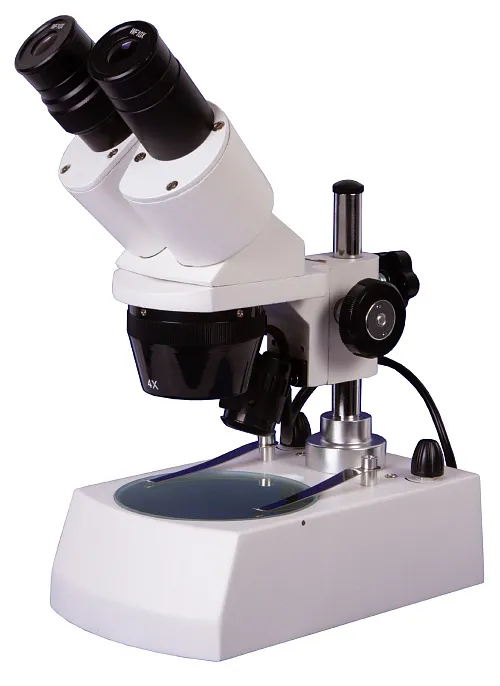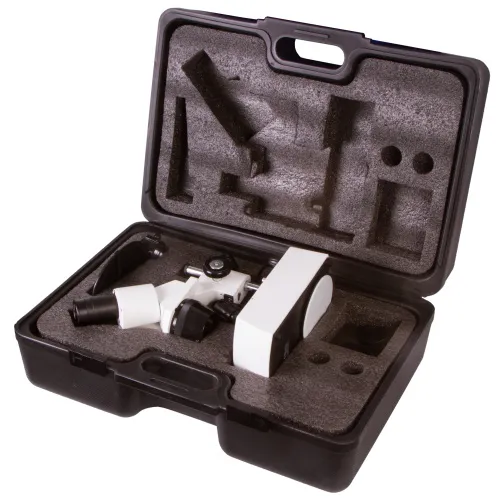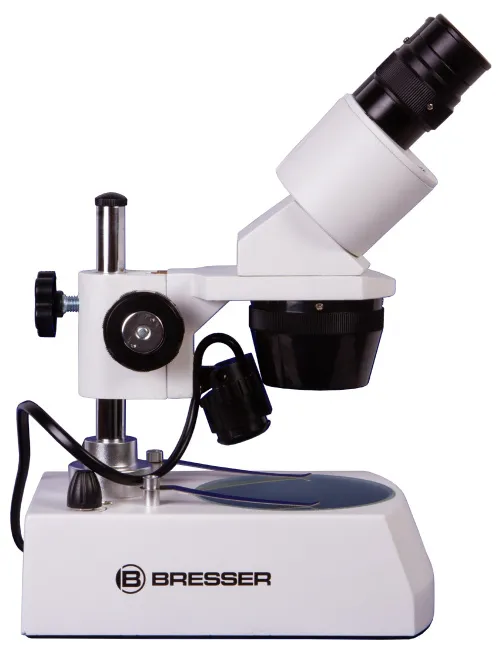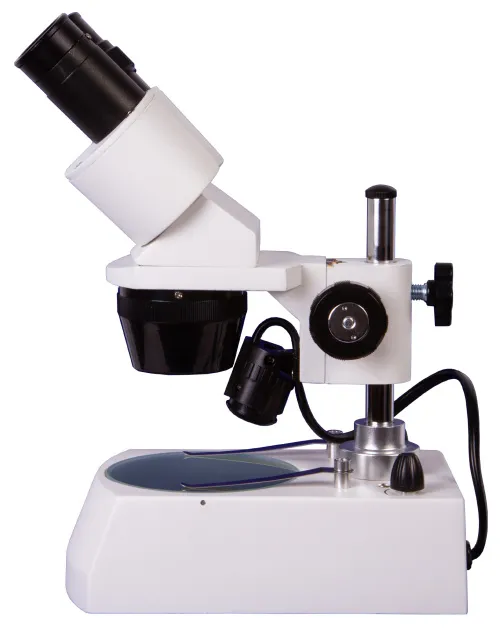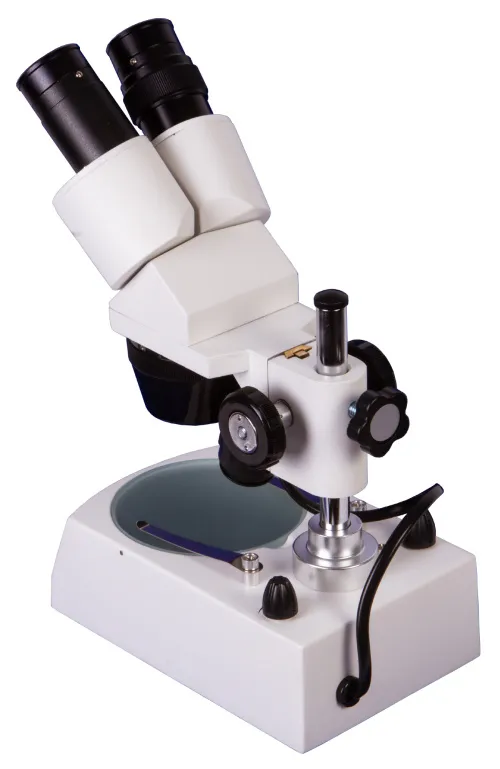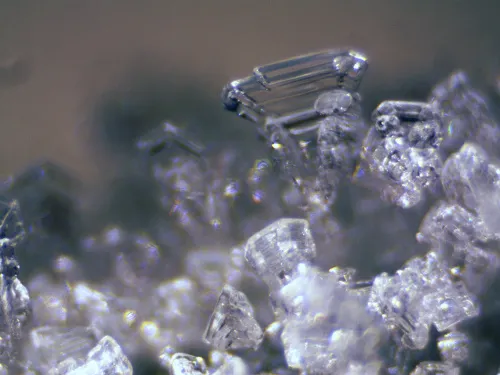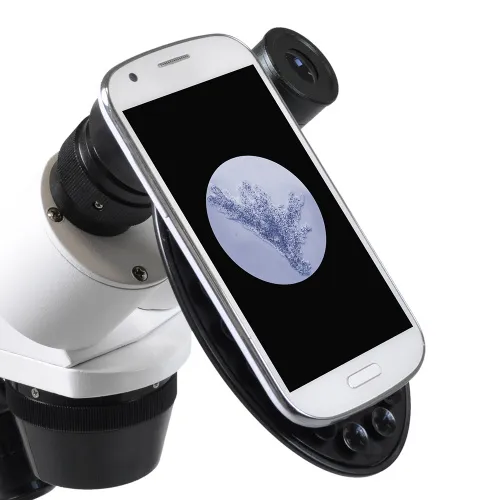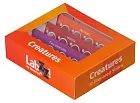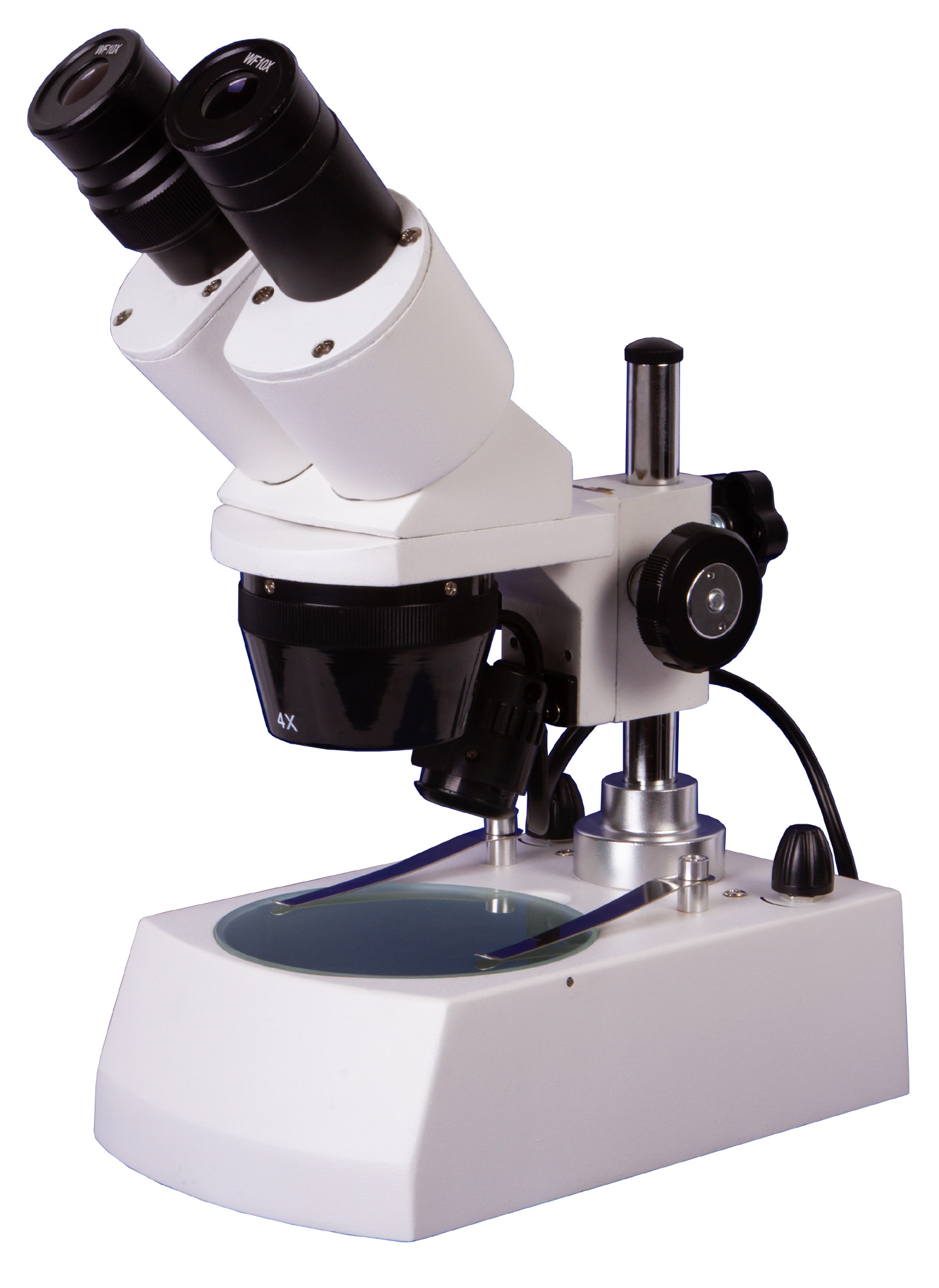Bresser Erudit ICD Stereo Microscope
Binocular head. Magnification: 20/40x
| Product ID | 74313 |
| Brand | Bresser GmbH, Germany |
| Warranty | 2 years |
| EAN | 4007922030784 |
| Package size (LxWxH) | 49x22x36 cm |
| Shipping Weight | 5.24 kg |
The Bresser Erudit ICD microscope is a stereo dissecting microscope and gives a threedimensional view. This is especially impressive when viewing structured materials.
With the maximum object height of 53mm you can view also bigger objects. The microscope is perfect for a variety of objects, like plants, insects, geological handpieces, etc. The Erudit ICD is also the perfect choice for children, because there is no need for tedious and difficult sample preparation. Simply place the sample on the object plate and view the finest details! The black/white object plate gives good contrast when viewing with incident light. With battery power the microscope is ready for your next excursion or field work, or use it anywhere around the house. With the sturdy carry case it is easily transported or stowed away.
Features:
- Type: Stereo microscope / dissecting microscope with incident and transmitted light
- Applications: biology, botany, insects
- Black/White-object plate for optimized contrast
- Glass object plate, 94mm
- Rubber eye cups for comfortable viewing, reduces stray light
- Smartphone holder for conveniant documentation
- Long life LED lighting, battery powered. Use anywhere, e.g. for field work
- Adjustable binocular head, diopter adjustment
- Sturdy carry case
- Magnification: 20x, 40x
- Stereo-objective
- Eyepiece barrel diameter: 30.5mm
- Battery powered (3x)Type AA
The kit includes:
- Stereo dissecting microscope with transmitted and incident light
- 2x wide field 10x eyepieces
- Stereo objectives, 2x/4x
- Glass object plate, clear glass
- Black/white object plate
- Smartphone holder
- Plastic carry case
| Product ID | 74313 |
| Brand | Bresser GmbH, Germany |
| Warranty | 2 years |
| EAN | 4007922030784 |
| Package size (LxWxH) | 49x22x36 cm |
| Shipping Weight | 5.24 kg |
| Type | stereo/instrumental |
| Microscope head type | binocular |
| Magnification, x | 20/40 |
| Eyepiece tube diameter, mm | 30.5 |
| Objectives | 2x, 4x |
| Revolving nosepiece | for 2 objectives |
| Working distance, mm | 53 |
| Interpupillary distance, mm | 51 — 79 |
| Body | aluminum, plastic |
| Illumination | LED |
| Brightness adjustment | ✓ |
| Power supply | 3 AA batteries, 1.5V |
| User level | beginners, experienced users |
| Application | school/educational |
| Illumination location | dual |
| Research method | bright field |
| Pouch/case/bag in set | case |
We have gathered answers to the most frequently asked questions to help you sort things out
Find out why studying eyes under a microscope is entertaining; how insects’ and arachnids’ eyes differ and what the best way is to observe such an interesting specimen
Read this review to learn how to observe human hair, what different hair looks like under a microscope and what magnification is required for observations
Learn what a numerical aperture is and how to choose a suitable objective lens for your microscope here
Learn what a spider looks like under microscope, when the best time is to take photos of it, how to study it properly at magnification and more interesting facts about observing insects and arachnids
This review for beginner explorers of the micro world introduces you to the optical, illuminating and mechanical parts of a microscope and their functions
Short article about Paramecium caudatum - a microorganism that is interesting to observe through any microscope

